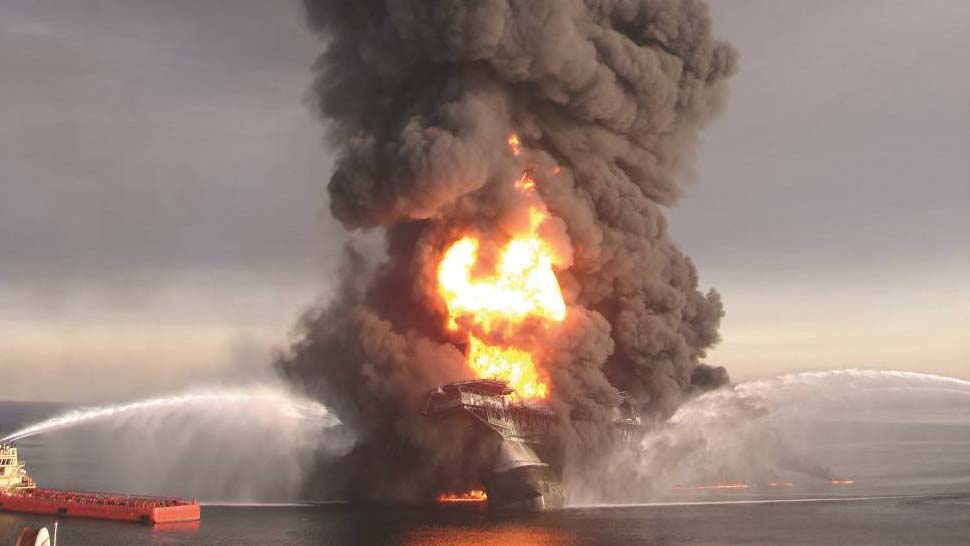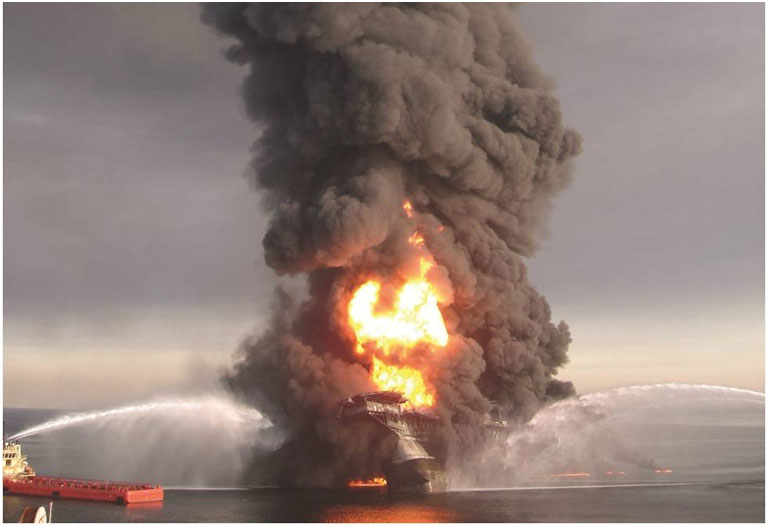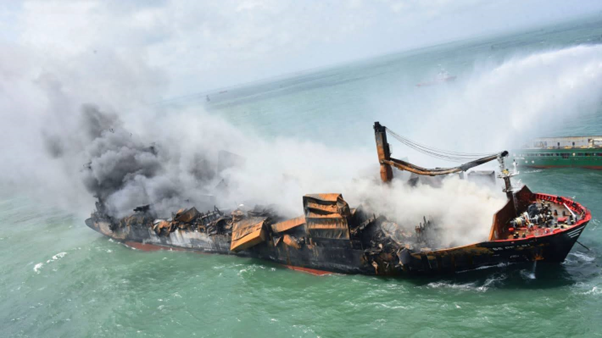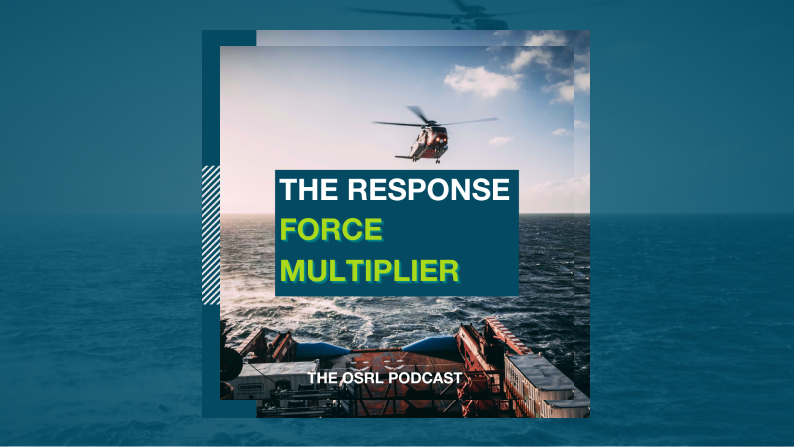Precaution and preparedness: Key to handle oil spills
In an interview with Shivani Mody from Chemical Today magazine, Aaron Montgomery, OSRL's Development and Assurance Lead, mentions his perspective on preventing and handling oil spill incidents with the right management technologies instead of shrugging off the incident as an unfortunate accident.
Global oil spills concerns
Over the past decade, there have been two very different events that have had a significant impact on the industry. The first was the Macondo incident in the Gulf of Mexico. The second, which is now starting to stabilise, is the significant drop in the price of oil – which went from a high of over $145 per barrel to a low of under $30.
The Macondo incident undoubtedly increased awareness of the impact an oil spill can have – from an environmental, financial and reputational perspective. It made operators look at their activity, and that of their partners, in a more critical light. More importantly, however, was how governments and industry responded. A colossal amount of work was performed by the industry, regulators and academia; working together to raise levels of preparedness and to create the physical tools required to effectively deal with a similar event, should it ever happen in the future. Historically, after a major incident, awareness starts high but fades over time but, with Macondo, we saw the preparedness bar raised and it has remained at a high level since. This is the new normal now which reflects the scale of the incident and the impact it had.
The other event is the collapse of the oil price. When a barrel is over $100, there are a lot more commercially-viable opportunities so, in recent years, operators have had to make tough decisions on when to invest and when to cut their losses. This led to a notable contraction of the industry, and coincided with an aging workforce, a well-documented skills gap, and a reduced number of internal personnel available to work on oil spill related activities. The consequence of this is that more support is now being sought from the oil spill response organization (OSRO) community, to support members and play a more active role in driving preparedness.
Global trends in pre and post oil-spill management technologies
What we’ve seen in terms of global trends in oil spill response is a focus on three key areas: tiered preparedness and response; Net Environmental Benefit Analysis (NEBA), and its SIMA (Spill Impact Mitigation Assessment) methodology; as well as stakeholder engagement. These areas all predominately focus on the pre-spill management activities and are designed to increase mitigation to stop a spill occurring, and to minimise the impact should one occur.
On the topic of tiered preparedness and response, the onus is on the operators to ensure they are well-prepared for every possible scenario and that they are scaling their response capabilities to a proportionate level for their current activity. We support them throughout this process, offering expert personnel, equipment, training, detailed contingency planning and working with regulators, amongst many other items.
With NEBA, and the SIMA methodology, you’re looking at how to select the best response strategy and what combination of response techniques you would look to utilise based on the incident specifics. Effectively, it’s about ensuring a well-documented and agreed response framework is implemented, which follows the process steps identified in international good practice.
The third development relates to stakeholder engagement and is incredibly important. This is about us working with regulators, national and local government stakeholders and other relevant bodies to make sure that recommended response techniques are already approved for use prior to a spill occurring, rather than us having to spend additional time racing to get permission after the incident has taken place.
When it comes to post-spill management techniques, we’re definitely seeing a greater adoption of the ‘Incident Management System’ or similar methodologies, which evolved off the back of the US’ ‘Incident Command Structure’. As a result, oil companies, regulators, and oil spill response organisations, such as OSRL, can increasingly work to a common structure and seamlessly integrate the required processes.
Comparing oil spill concerns in Middle East, Asia Pacific and Africa regions
The Middle East has a mature industry and a regulatory environment which reflects that. Whereas, in West Africa, the regulatory framework, although established, is still developing and that requires a slightly different approach. This manifest itself through items like preparedness expectations, which may differ from client to client.
West Africa is a good example. Industry is working incredibly hard to engage with the regulator, taking a very proactive approach but it’s is effectively still in its infancy and it’s a steep learning curve. The Middle East has been through those pain points and come out the other side; the same too, although to a slightly lesser extent, with Asia Pacific.
Equally, the oil price drop has meant that more of the marginal fields in West-African regions are no longer commercially viable, so we’ve seen that disparity between the different regions reduce to a point where they are all fairly similar at the moment, with larger well-established players taking the lead. Importantly though, everyone shares the same desire to ensure that effective preparedness activities are taking place.
Demands from major oil & gas exploration and production companies
Currently, it is focused on the preparedness side of things. There’s a trend towards greater levels of quality and depth from preparedness plans and more detailed modelling analysis, which is great. That also extends to equipment and having the appropriate tools, as well as ensuring the right quantity of equipment is on site and making sure internal teams are prepared to go out and respond – making sure they are well-trained and capable.
In the last few years, following Macondo, we’ve also been heavily involved in the development of SWIS (Subsea Well Intervention Service) and the introduction of the subsea well capping technology. That’s been followed by the arrival of the subsea containment equipment and the offset installation equipment to create a complete solution for subsea wells. Overall, this collection of new tools has been quite a game changer for the industry but their development was essential to ensure Macondo never happens again, and that reflected through the increased regulatory standards around the world.
Chemical oil-spill response solutions for oil companies
When it comes to the use of chemicals when dealing with a spill, we would consider using dispersants and surface washing agents in particular circumstances. Dispersants are similar in composition to washing up liquid and have played an important role within our response toolbox for a number of decades. There have been plenty of developments to increase their effectiveness and efficiency, and to ensure they are not detrimental to the marine ecosystem, throughout that time.
With all response techniques, there is a time when we would use dispersant and a time when we wouldn’t use them. Therefore, the when, how and quantity in which they are used is always considered by our experts using the NEBA/SIMA process and those decisions are typically taken in close coordination with local stakeholders.
Certain dispersants are approved in different territories, so it is our responsibility to ensure we have the required stockpiles of the right dispersants in our facilities around the world.
R&D and innovation happening in oil spill response technology
For organisations like Oil Spill Response Ltd (OSRL), understanding the potential value or application, and learning how to effectively integrate the latest technology, is central to our commitment to continuous improvement.
Advances in remote sensing – using platforms such as satellites, unmanned aerial vehicles (UAVs), and autonomous underwater vehicles (AUVs) - offer huge potential for monitoring and responding to oil spills more safely and efficiently. Our goal is improving situational awareness through the provision of reliable surveillance data in a timely manner and using this to make informed response decisions. However, without being used in real-world scenarios, it is impossible to make accurate recommendations on the most effective solutions, so testing is essential.
As an example, we recently organised an ‘oil-on-water’ exercise to test and validate several technologies, including satellite, airborne surveillance, in-water surveillance, and communications equipment. The exercise brought together several oil spill remediation and technology specialists, and provided a realistic testbed to examine the effectiveness of each of these emerging technologies.
The outcome of the exercise showed that some of these new tools are more effective than others. Some are already available to be widely used and others still require further development to adapt them to the requirements of the oil spill industry. But, the potential is there. Equally, some of the tools are effective but have significant limitations. Technology such as optical satellites are restricted by their orbit path and cloud cover. Radar satellites can be more flexible as they are not weather dependent and can identify surface oil by measuring the dampening effect it has on wave height but they are still limited by their reactivity so it’s about finding the right mix and leveraging each technology’s strengths.
Solutions provided for controlling, monitoring & tackling oil spills
We provide a technical source of excellence to our members and ensure they are trained and prepared to deal with any eventuality. If an incident does happen, we work with our members to provide advice on response efforts, as well as supporting members with relevant equipment and specialist personnel to aid the response effort.
We hold a large quantity of response apparatus within our facilities. This includes subsea response equipment, oil collection equipment, booms and dispersants, which are all housed in bonded warehouses in key locations around the world. If we are called upon, we are ready to move everything that will be required, including personnel, in a matter of hours.
We also offer monitoring and management solutions in the form of our own surveillance planes and command and control centres, so everything is designed to ensure the quickest possible resolution to an incident.
Having an edge over others in the industry
I think we have a genuine edge over others in several areas but first and foremost, we are owned by our members. We are a cooperative of industry-related organisations, which share the same goals and the same commitment to driving the industry forward in the long term. Our global aviation capacity for wide area dispersant spraying, which includes two 727 and one Hercules aircraft, is a true differentiator.
That manifests itself in lots of ways but few more so than the commitment we have to our people. We dedicate a huge amount of resources to training our teams and we are committed to attracting, developing and energising the very best people around the world to better support our members.
In addition, as a true global Tier 3 provider, we have unrivalled experience of dealing with spills, at all levels, around the world. We have demonstrated this, time and time again in real-world situations and our members benefit from that experience every day. With the five free days of technical support we offer, they can also leverage our collective knowhow without incurring any cost.
Preparedness in the event of oil spills
In a practical sense, we can only really advise on preparedness not prevention. Anecdotally, $1 spent on preparedness will save you $100 of response so getting the right plans and procedures in place, and understanding where your risk lies is essential. If you know the risks you can mitigate them. If you are prepared for any eventuality and if your teams are well trained, you can avoid many of the dangers which can lead to spills.
Work with your response partner to develop your preparedness planning, ensure training is up to date and follow industry best-practice methodologies, as I mentioned earlier.
Challenges faced by players in oil spill response
The price of oil is still the biggest challenge facing oil companies around the world and that is reflected by several organisations selling assets, decommissioning fields and shifting their focus. That has a knock-on effect on the spill response community, as a smaller number of active fields – and active fields being sold to non-members – impacts our revenue.
The industry skills gap is another issue. This has ramifications for OSRL as members are increasingly relying on us to provide the intelligence and know-how that historically sat internally. As a result, we are seeing an increase in the number of OSRL personnel are being placed on secondments within members’ organisations to help support their activity.
This type of trend highlights our responsibility to develop individuals within OSRL to keep pace with industry and regulatory developments and maintain the high levels of support we provide to members.
By Shivani Mody
© Chemical Today magazine
Visit Chemical Today Magazine.







